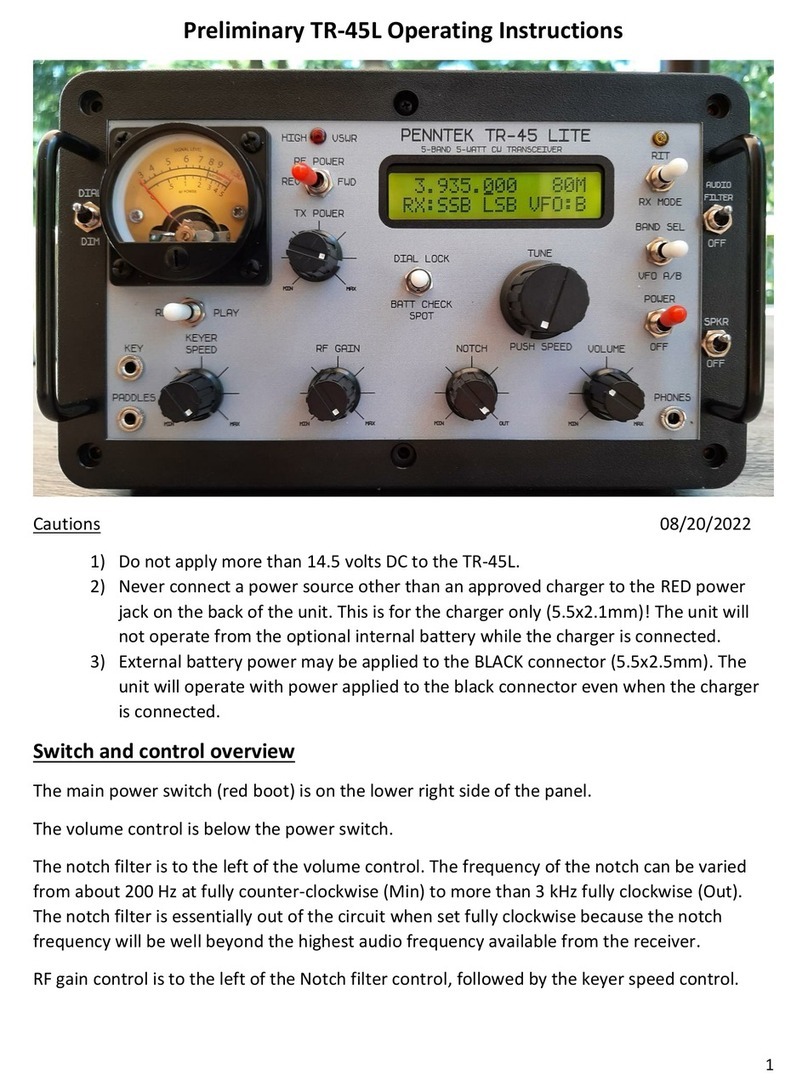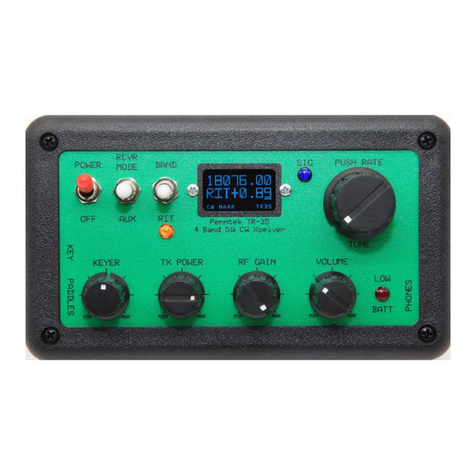5
control to a comfortable setting. A little slower than normal might be better. Don’t
adjust the speed control while in record mode. To record a memory, activate and
hold the “AUX” switch for about 1.5 seconds. The OLED display will show the record
menu. Choose message 1 by tapping the “DIT” paddle, or message 2 by tapping the
“DAH” paddle. The TR-35 sidetone will immediately respond by sounding a “1” or
“2” in morse. If the sidetone sounds a little “clicky”, turn down the RF gain control
some. After the morse number is finished playing, you may record your message
using the paddles. The transmitter will be inhibited while you record your message.
When your message is finished, simply stop sending, and the recording session will
time out after about 3 seconds and the TR-35 will revert to regular transceiver
mode. To Listen to, or play back your message, activate a short “AUX” switch
closure. The playback menu will appear on the display. Be aware that the
transmitter will be active while playing back a message. Turn down the RF power
control to check the recorded message. Message 1 is selected by tapping the “DIT”
paddle and message 2 by tapping the “DAH” paddle. The selected message will
immediately start to play, and will play to the end unless the “AUX” switch is
activated, which will stop the message playback. An “AUX” switch activation will
also abort a recording session. The volume control must be up to hear a message.
Reverse Optic Display Mode
Better display visibility in bright light conditions may be possible by reversing the
display optics, that is, black numbers on a blue background. To do this, the TR-35 is
turned on while the receiver mode switch is engaged and held until the display
shows solid blue. Changing back to normal optic mode requires a power reset
without the receiver mode switch engaged. Note that the reverse display mode
consumes about 10ma more current from the battery.
Internal Adjustments
There are five internally accessible adjustments: PA Bias, sidetone level, signal
level LED sensitivity, audio bandpass filter frequency, and low battery detector
threshold. The PA bias normally shouldn’t need adjustment except at initial build.
If your TR-35 is factory built, it would be rare that this control ever needs



























